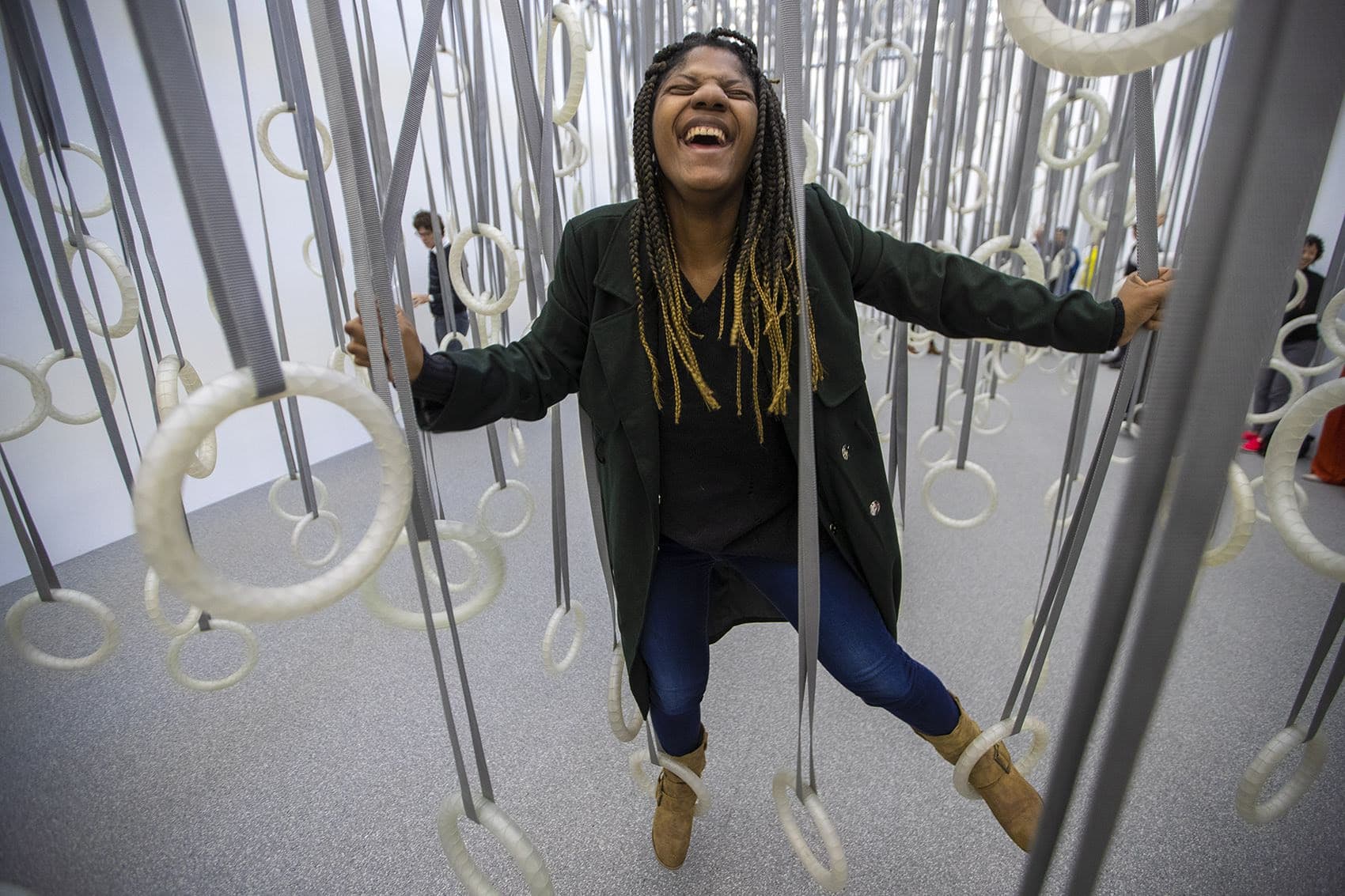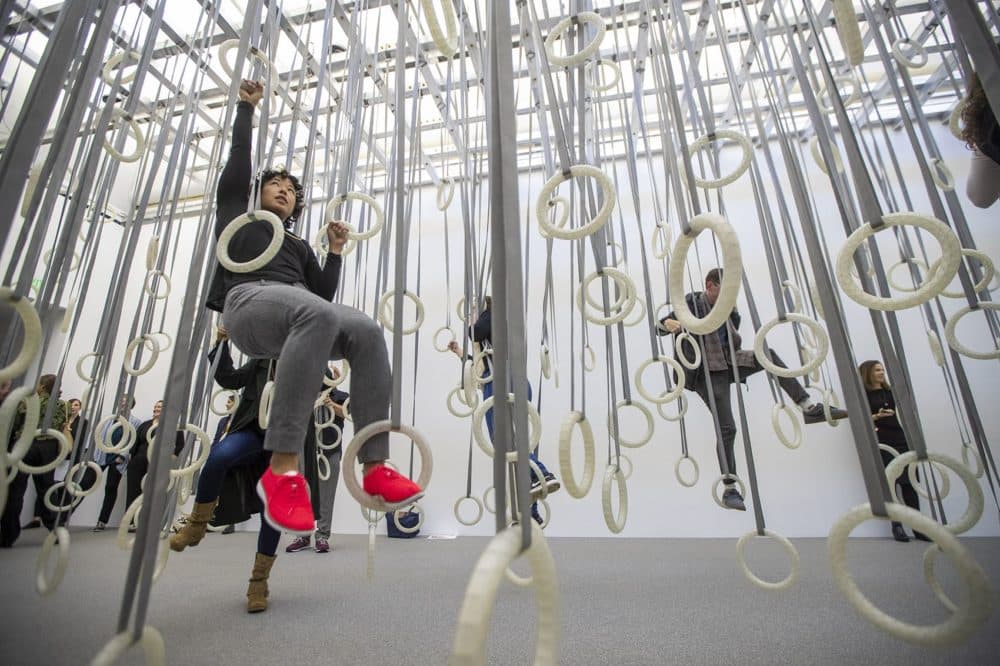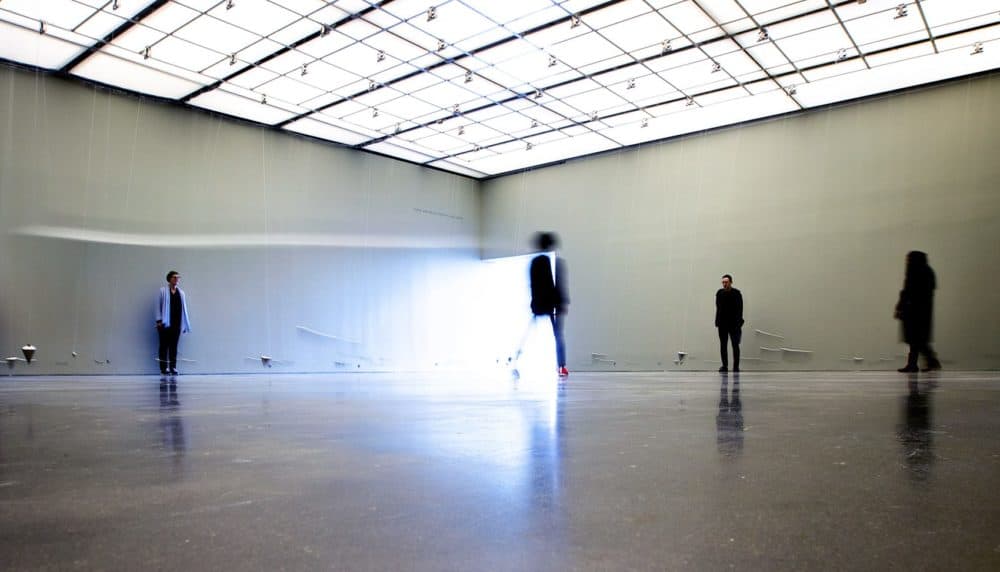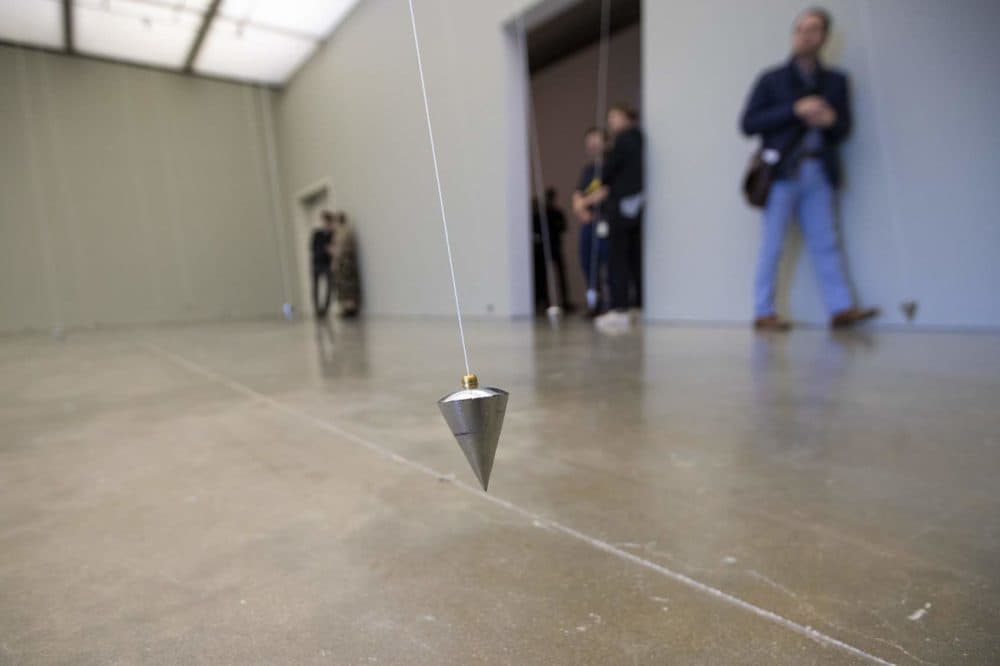Advertisement
A New Exhibit At The ICA Asks You To Perform Physical Feats — And To Fail

Dozens of gymnastic rings dangle from the ceiling in a vast gallery at the Institute of Contemporary Art in Boston. Museum visitors twist their way through this suspended forest, swaying precariously as they attempt to cross the room — without ever touching the floor.
Beth Smith, 68, of Cambridge, slides her feet into the loops and hoists herself up. But actually getting anywhere? That’s another story.
“[It] makes me realize that you need to be stronger, keep your body stronger,” Smith says, shortly after returning to earth.
There are plenty of lessons to be gleaned from this installation by the Vermont-based choreographer William Forsythe. It will probably reacquaint you with your physical limitations. It is also ripe for metaphorical readings — what is life, after all, if not a series of absurd, slightly pointless challenges?

Forsythe is one of the world's foremost choreographers of contemporary dance, renowned for rigorously inventive pieces that upend the exacting precepts of ballet. A significant portion of his decades-long career was spent directing the Frankfurt Ballet, and later his own company. Since the '90s he has also been creating interactive art installations, which he calls “choreographic objects.” These are the focus of “William Forsythe: Choreographic Objects” at the ICA, the first comprehensive exhibition of his work in the U.S.
“It started with people asking me if I could do something without dancers,” Forsythe says of his art installations. “And I thought, ‘Hmm,’ and of course I said immediately, ‘Of course I can’ — having no idea whether I could or not.”
In one early piece, visitors attempted to navigate a room filled with thousands of balloons, while also holding onto balloons of their own. In order to avoid getting tangled, they needed to walk with exaggerated care.
Advertisement
“And I was like, ‘Eureka,' ” Forsythe says. “Things make people move.”

The exhibition at the ICA happens to coincide with Forsythe’s five-year residency with the Boston Ballet. Next spring the company will present a program called “Full on Forsythe” featuring three of Forsythe’s works, including a world premiere. But audiences can get a much more intimate experience at the ICA, where they are invited to touch, hold and even climb the objects.
“They ask the untrained, the lay person, to produce individual choreographies from everyday movements,” ICA curator Eva Respini says of Forsythe's pieces. “What it looks like when we sit down or crouch down or when we step off of a curb if we’re avoiding a bus driving by, these are movements that you'll see repeated in the exhibition. These unconscious movements now become the focus.”
That's certainly the case in the final room of the show, where 80 metal pendulums swing rhythmically from the ceiling. Moving through them as they swish past becomes a quiet, mesmerizing dance.


Along with grace, Forsythe’s work contains risk.
“[Forsythe] talks a lot about his work being a metaphor for life,” Respini says. “What does it mean to face the impossible, to make an effort and still fail?”
It's easy to see how failure comes into play in that room full of rings. I only made it about halfway through the installation. It was exhausting, and left me sore for days.
Forsythe chuckles when I tell him about my struggle. “I'm really glad you were having a hard time,” he says. "Probably you weren't thinking about much else at that time. You were not worried about your bank statement, or your parking ticking away. I think that it brought you to yourself, the way dilemmas do."
Leave it to Forsythe to find the silver lining in my dilemma. Alongside failure, his pieces evoke transcendence and wonder. In one of my favorites, Forsythe appears in a large projected video, somersaulting weightlessly through the air. It’s an optical illusion — he’s actually on the floor, moving arduously through different poses — but he seems to float, effortlessly, in total defiance of gravity.
"William Forsythe: Choreographic Objects" is on view at the ICA until Feb. 21, 2019.
This segment aired on November 2, 2018.
